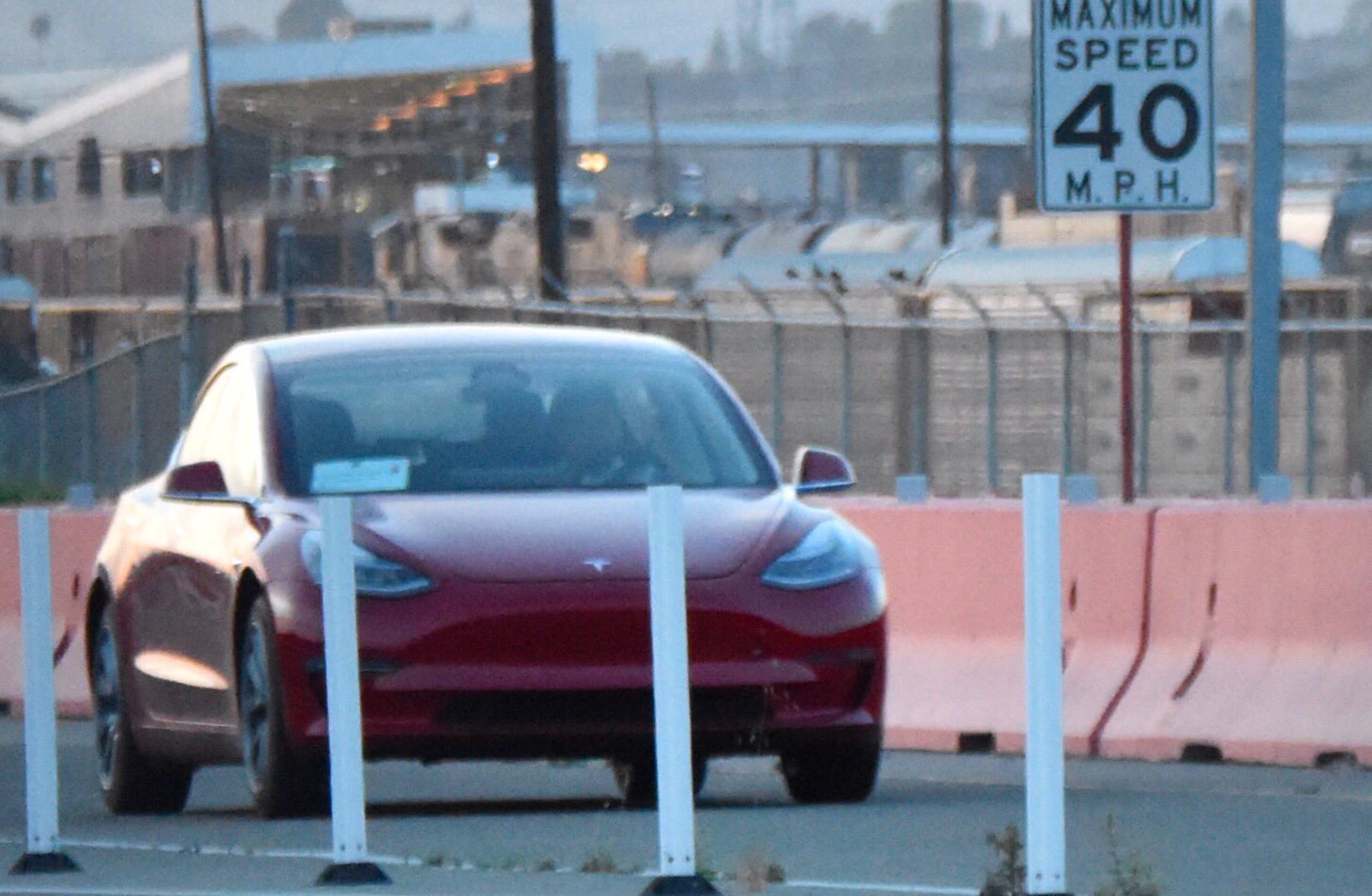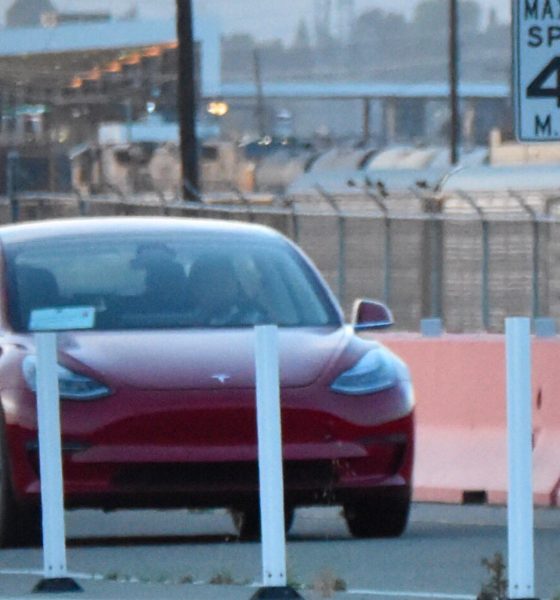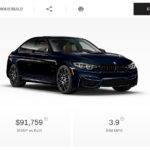

News
How Tesla Model 3 Performance stacks up against track legends in its class
This past weekend, Tesla CEO Elon Musk revealed the price and specifications of the Model 3 Performance with Dual-Motor AWD. According to Elon Musk, the Model 3 Performance will cost $78,000 with all options except Autopilot. The vehicle has a top speed of 155 mph, is capable of sprinting from 0-60 mph in 3.5 seconds, and is capable of traveling 310 miles on a single charge.
With Autopilot and Full Self-Driving added, the cost of the Model 3 Performance shoots up to $86,000, and with the possibility of an upcoming Ludicrous Mode upgrade ($7,500 for the Model S P85D and $10,000 for the Model S P90D), the price of the vehicle would likely be dangerously close, or even surpass the $90,000 barrier. While these prices are a far departure from the car’s $35,000 base price, they are, nevertheless, reasonable.
One thing to note when looking at the Model 3 Performance is Tesla’s target demographic. The vehicle is being marketed to car enthusiasts who are looking for a high-performance vehicle that is quick off the line and nimble on the corners. A clue regarding this could be found on Elon Musk’s own statements on Twitter.
Cost of all options, wheels, paint, etc is included (apart from Autopilot). Cost is $78k. About same as BMW M3, but 15% quicker & with better handling. Will beat anything in its class on the track.
— Elon Musk (@elonmusk) May 20, 2018
Musk’s specific mention of the Model 3 Performance’s capabilities on the track is particularly noteworthy. Tesla’s electric cars, such as the Model S P100D, after all, have largely been formidable in straight-line races, but not so much in extended track driving. As could be seen in instances of the Model 3 being driven on a track, however, this particular limitation does not seem to exist in Tesla’s newest vehicle.
Earlier this year, the Model 3 was taken to the Laguna Seca Raceway, where it completed nine laps without limiting its power. Last month, a Model 3 took on an Autocross course, where it performed equally well without any heating issues. Earlier this month, a Model 3 took on another course, showing off its acceleration and cornering in a quick lap. All these vehicles performed far better on the track than the Model S or Model X. None of them were specifically tuned for performance.
With the Model 3 Performance, Tesla is trying to breach into the track driving market. Musk’s tweet specifically mentioned the BMW M3 — a legend on the track — stating that the Model 3 Performance will be roughly 15% quicker. This places the Model 3 Performance in the same league as the Mercedes AMG C 63 S Coupe, Audi RS5, and of course, the BMW M3. Compared to the cost of the fully-loaded options for these vehicles, the compact electric car is actually more affordable.
Take the Mercedes AMG C 63 S Coupe, for example. A fully-loaded version of the car costs just slightly over $106,000. A fully-loaded BMW M3? $91,759. As for the Audi RS5, a fully-loaded version will set back owners $93,325. With this in mind, the Model 3 Performance’s $78,000 price is actually a pretty good steal.
Specs-wise, the Mercedes AMG C 63 S Coupe is equipped with a twin-turbocharged and intercooled DOHC 32-valve V8 engine. The vehicle has a top speed of 180 mph and is capable of sprinting from 0-60 mph in 3.8 secs. The BMW M3, on the other hand, is equipped with a twin-turbocharged and intercooled DOHC 24-valve inline-6 engine. This gives the BMW M3 a top speed of 163 mph and a 0-60 mph time of 4.0 seconds. As for the Audi RS5, the high-performance vehicle is fitted with a twin-turbocharged and intercooled DOHC 24-valve V6, which gives the car a top speed of 174 mph and a 0-60 mph time of 3.9 seconds.
When looking at the Model 3 Performance, it is pertinent to note that Tesla is not marketing the vehicle to the same demographic as the electric car’s $35,000 standard range version. The base Model 3 is designed to be an affordable electric car that is as stylish as it is capable. The Model 3 Performance is a vehicle designed to to be comparable to some of the best cars in its class. Apart from sharing the same frame and the same interior, the $35,000 base Model 3 and the $78,000 Model 3 Performance are two electric cars that could not be any more different.

News
Tesla FSD fleet is nearing 7 billion total miles, including 2.5 billion city miles
As can be seen on Tesla’s official FSD webpage, vehicles equipped with the system have now navigated over 6.99 billion miles.

Tesla’s Full Self-Driving (Supervised) fleet is closing in on almost 7 billion total miles driven, as per data posted by the company on its official FSD webpage.
These figures hint at the massive scale of data fueling Tesla’s rapid FSD improvements, which have been quite notable as of late.
FSD mileage milestones
As can be seen on Tesla’s official FSD webpage, vehicles equipped with the system have now navigated over 6.99 billion miles. Tesla owner and avid FSD tester Whole Mars Catalog also shared a screenshot indicating that from the nearly 7 billion miles traveled by the FSD fleet, more than 2.5 billion miles were driven inside cities.
City miles are particularly valuable for complex urban scenarios like unprotected turns, pedestrian interactions, and traffic lights. This is also the difference-maker for FSD, as only complex solutions, such as Waymo’s self-driving taxis, operate similarly on inner-city streets. And even then, incidents such as the San Francisco blackouts have proven challenging for sensor-rich vehicles like Waymos.
Tesla’s data edge
Tesla has a number of advantages in the autonomous vehicle sector, one of which is the size of its fleet and the number of vehicles training FSD on real-world roads. Tesla’s nearly 7 billion FSD miles then allow the company to roll out updates that make its vehicles behave like they are being driven by experienced drivers, even if they are operating on their own.
So notable are Tesla’s improvements to FSD that NVIDIA Director of Robotics Jim Fan, after experiencing FSD v14, noted that the system is the first AI that passes what he described as a “Physical Turing Test.”
“Despite knowing exactly how robot learning works, I still find it magical watching the steering wheel turn by itself. First it feels surreal, next it becomes routine. Then, like the smartphone, taking it away actively hurts. This is how humanity gets rewired and glued to god-like technologies,” Fan wrote in a post on X.
News
Tesla starts showing how FSD will change lives in Europe
Local officials tested the system on narrow country roads and were impressed by FSD’s smooth, human-like driving, with some calling the service a game-changer for everyday life in areas that are far from urban centers.

Tesla has launched Europe’s first public shuttle service using Full Self-Driving (Supervised) in the rural Eifelkreis Bitburg-Prüm region of Germany, demonstrating how the technology can restore independence and mobility for people who struggle with limited transport options.
Local officials tested the system on narrow country roads and were impressed by FSD’s smooth, human-like driving, with some calling the service a game-changer for everyday life in areas that are far from urban centers.
Officials see real impact on rural residents
Arzfeld Mayor Johannes Kuhl and District Administrator Andreas Kruppert personally tested the Tesla shuttle service. This allowed them to see just how well FSD navigated winding lanes and rural roads confidently. Kruppert said, “Autonomous driving sounds like science fiction to many, but we simply see here that it works totally well in rural regions too.” Kuhl, for his part, also noted that FSD “feels like a very experienced driver.”
The pilot complements the area’s “Citizen Bus” program, which provides on-demand rides for elderly residents who can no longer drive themselves. Tesla Europe shared a video of a demonstration of the service, highlighting how FSD gives people their freedom back, even in places where public transport is not as prevalent.
What the Ministry for Economic Affairs and Transport says
Rhineland-Palatinate’s Minister Daniela Schmitt supported the project, praising the collaboration that made this “first of its kind in Europe” possible. As per the ministry, the rural rollout for the service shows FSD’s potential beyond major cities, and it delivers tangible benefits like grocery runs, doctor visits, and social connections for isolated residents.
“Reliable and flexible mobility is especially vital in rural areas. With the launch of a shuttle service using self-driving vehicles (FSD supervised) by Tesla in the Eifelkreis Bitburg-Prüm, an innovative pilot project is now getting underway that complements local community bus services. It is the first project of its kind in Europe.
“The result is a real gain for rural mobility: greater accessibility, more flexibility and tangible benefits for everyday life. A strong signal for innovation, cooperation and future-oriented mobility beyond urban centers,” the ministry wrote in a LinkedIn post.
News
Tesla China quietly posts Robotaxi-related job listing
Tesla China is currently seeking a Low Voltage Electrical Engineer to work on circuit board design for the company’s autonomous vehicles.

Tesla has posted a new job listing in Shanghai explicitly tied to its Robotaxi program, fueling speculation that the company is preparing to launch its dedicated autonomous ride-hailing service in China.
As noted in the listing, Tesla China is currently seeking a Low Voltage Electrical Engineer to work on circuit board design for the company’s autonomous vehicles.
Robotaxi-specific role
The listing, which was shared on social media platform X by industry watcher @tslaming, suggested that Tesla China is looking to fill the role urgently. The job listing itself specifically mentions that the person hired for the role will be working on the Low Voltage Hardware team, which would design the circuit boards that would serve as the nervous system of the Robotaxi.
Key tasks for the role, as indicated in the job listing, include collaboration with PCB layout, firmware, mechanical, program management, and validation teams, among other responsibilities. The role is based in Shanghai.
China Robotaxi launch
China represents a massive potential market for robotaxis, with its dense urban centers and supportive policies in select cities. Tesla has limited permission to roll out FSD in the country, though despite this, its vehicles have been hailed as among the best in the market when it comes to autonomous features. So far, at least, it appears that China supports Tesla’s FSD and Robotaxi rollout.
This was hinted at in November, when Tesla brought the Cybercab to the 8th China International Import Expo (CIIE) in Shanghai, marking the first time that the autonomous two-seater was brought to the Asia-Pacific region. The vehicle, despite not having a release date in China, received a significant amount of interest among the event’s attendees.











